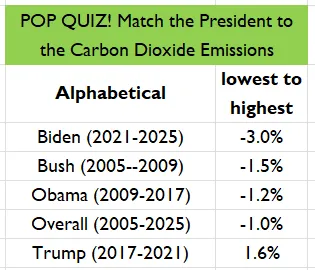https://rogerpielkejr.substack.com/p/is-global-warming-less-than-we-thought

…
Zou et al. 2023 is the paper I am inviting you to discuss (thanks @weerrecords!), which I’ll call Zetal23. It is open access and can be found at the link below.
Zou, C. Z., Xu, H., Hao, X., & Liu, Q. (2023). Mid‐Tropospheric Layer Temperature Record Derived from Satellite Microwave Sounder Observations with Backward Merging Approach. Journal of Geophysical Research: Atmospheres, e2022JD037472.
The authors explain what they did in the study:
Long-term observations of global atmospheric temperatures from satellite microwave sounders play a vital role in climate change research. These observations involved multiple satellites spanning several decades. Careful intersatellite calibration and bias correction are needed to derive inter-consistent records from multi-satellite observations for reliable climate change detection. Here we develop a new version of the NOAA Center for Satellite Applications and Research (STAR) mid-tropospheric temperature (TMT) time series for climate trend investigation.
Long-timers in the climate space will know well that debates over satellite temperature trends used to be knock-down, drag-out affairs. In a wiseacre nutshell — if you favored the satellite temperature record, you were probably a denier, and if you saw the satellites as flawed, then you were onsides. Here is how Carbon Brief characterized the debate back in 2017:
Climate sceptics have long claimed that satellite data shows global warming to be less pronounced than observational data collected on the Earth’s surface.
The occasion for that characterization was a paper (Mears and Wentz 2017) that suggested that a leading satellite time series may have been flawed and as a result, underestimated warming trends. Carbon Brief explained at the time of the then-new paper:
Researchers from Remote Sensing Systems (RSS), based in California, have released a substantially revised version of their lower tropospheric temperature record. After correcting for problems caused by the decaying orbit of satellites, as well as other factors, they have produced a new record showing 36% faster warming since 1979 and nearly 140% faster (i.e. 2.4 times larger) warming since 1998. This is in comparison to the previous version 3 of the lower tropospheric temperature (TLT) data published in 2009.
Well, as I often warn, be careful celebrating the results of any one study too much, because science moves ahead and there is no guarantee that any single paper stands the test of time. And that brings us back to Zetal23 — written by a highly qualified and well-published team of researchers from the National Oceanic and Atmospheric Administration (NOAA) and published in a leading climate science journal.
Zetal23 have produced a new estimate of global warming using satellites, which can be seen in the figure below.

…
Read that again, especially the last sentence. Zetal23 are suggesting the possibility that either observations of global warming are flawed, that climate models are flawed, or maybe both. These possibilities would — if true — be very scientifically important. Hence, why discussion of Zetal23 is important.
My two cents:
- Nothing in the Zetal23 has any implications for my views of climate policy, which remain highly robust to the evolution of scientific understandings, uncertainties and ignorance, as they should be.
- The new study adds weight to an analysis I participated in in 2009 that offered “An alternative explanation for differential temperature trends at the surface and in the lower troposphere,” (which, by the way, was published in the same journal as Zetal23) in which we hypothesized that there was a warm bias in the land surface temperature record as compared to the satellite temperature record due to real-world physical processes in the atmospheric boundary layer. The paper started as a “dinner table” debate between my dad and I — you can read all about it in non-technical language here and a more technical discussion here.
With that, I invite you to join a discussion of Zetal23.
Is it sound? If so, is it important?


